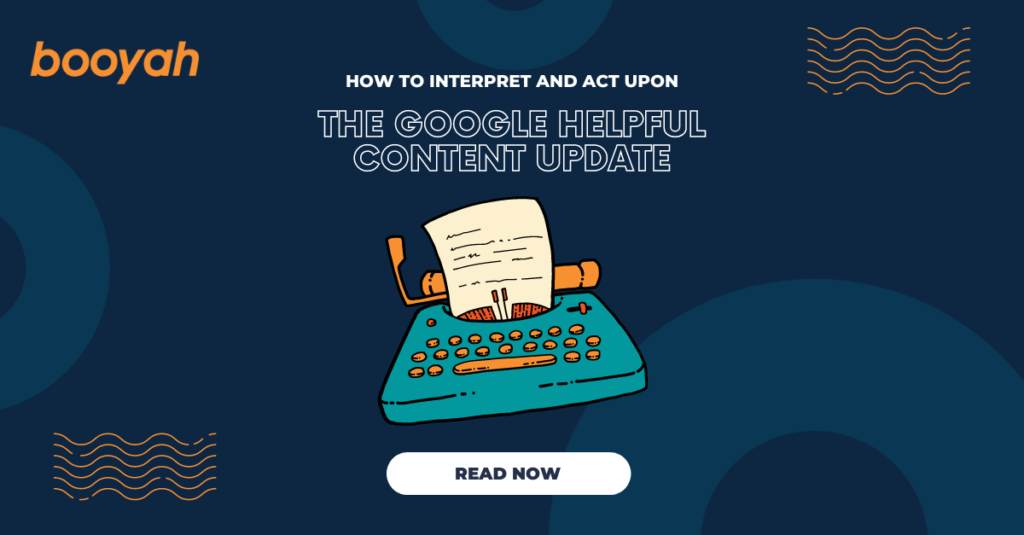Interpreting the Google Helpful Content Update
For years, Google has pushed brands to provide “useful content,” but sometimes it takes an algorithm update to force brands into action. On August 25, 2022, the search engine gave those brands a firm push via the Google helpful content update, rejigging its ranking system to reward websites publishing genuinely useful material.
On December 5, Google began rolling out a new helpful content update, making further changes to its algorithm. The company said the rollout would be finished within about two weeks, which means websites could see changes to their rankings ahead of the start of Q1.

What is the Google Helpful Content Update?
According to Google, the helpful content system “aims to better reward content where visitors feel they’ve had a satisfying experience, while content that doesn’t meet a visitor’s expectations won’t perform as well.”
Working across different languages, the system uses a classifier to automatically identify low-value content via a machine-learning model. Websites with large amounts of unhelpful content will then perform worse in searches. The December 2022 helpful content update includes tweaks to this system, though the exact nature of those tweaks has not been made public yet.
The original helpful content update was no great surprise. Users want information they can use immediately when it comes to just about anything. The update was Google’s way of saying “stop thinking about keywords only and start providing helpful information.”
How is It Going to Impact Your Content Strategy?
Because Google’s first helpful content update arrived in early September, you might find that your site has already been impacted by it. If you noticed a drop in traffic this fall, take it as a warning that things could get worse during the month ahead. If you noticed improvements, great job: Google doesn’t think you’re a content mill… yet.
We’re striking a cautious tone because the new update could include stricter criteria for what the classifier considers “helpful” — we simply won’t know the full extent of the changes until later in December. We can, however, anticipate how it’s going to impact content strategy.
In short, it’s time to stop obsessing over specific keyword rankings, and start answering important questions and solving problems for users who are wrestling with real-world challenges. Those people need answers quickly. They want to know who can solve their problems as they sit and gaze at Google search results. If you can solve your audience’s problems, you’re in good shape.
Think of Google’s “People Also Ask” results. Brands that optimize their content to succinctly answer specific questions are rewarded with Page One real estate. A winning content strategy focuses on truly understanding your audience and helping them solve their biggest challenges, “traditional SEO” be damned!
Best Practices When Accounting for the Update

Brands that rely on content for traffic should brace themselves for dips in the coming weeks. The initial helpful content update didn’t exactly have a seismic impact, but the December update could be more ruthless.
In fact, Google search guru Danny Sullivan tweeted on September 6, “if you do have unhelpful content, you shouldn’t think that we won’t figure that out and [you should] consider changing what you’re doing.” He added that future updates could have “more significant” consequences for publishers.
So how are you going to keep your website in Google’s good books?
Use Google’s Own Content Guidelines
Google Search Central has published a guide to creating helpful, reliable, people-first content. It states the importance of original research and insights, expert authorship, and clear and professional presentation. At the same time, it warns against producing low-value content that’s only purpose is to climb search engine rankings.
Remember that you need to make offensive and defensive plays here. This means creating new, helpful content while simultaneously getting rid of any duplicate or unhelpful content that could incur the wrath of the classifier.
Perform Exhaustive Persona Analysis
You need to understand your audience and what keeps them up at night. Yes, this requires keyword research, an understanding of what the competitors are doing, and the actual intent of the buyer. But if a brand expects its audience to dig through self-promotional content to find a potential solution to its challenges, it needs to think again.
Give Users Exclusive Content
We are on the verge of a cookieless future, meaning brands must create content worth someone giving up a name and email address for. This is by far the best, most cost-effective data a brand can get.
What content are you producing that is valuable enough for a user to give you contact information? A white paper? An infographic? An annual “state of the union” report in your industry? Not only will this kind of content get you first-party data, but it’s also exactly the kind of thing Google will recognize as valuable and therefore ranking-friendly.
Measure and Optimize
You don’t know precisely how Google’s classifier is going to judge “helpfulness.” But you can use the data available to you: if users are consistently engaging with a page, that’s a good indication that they’re finding it helpful.
Dig deep into your site analytics. What are your top landing pages? What is the intent behind keyword and keyphrase searches? Is your audience finding the right content to help them solve problems and achieve your desired outcome? Are there specific content themes you can identify that keep your audience engaged and yearning for more? Identify what you’re already doing well and build upon it.
Be Patient
If your website loses traffic following the latest Google helpful content update, all is not lost: removing unhelpful content can improve overall site ranking, as the classifier scours the web continuously. However, bear in mind that the reevaluation process could take several months.
In the meantime, familiarize yourself with Booyah’s SEO predictions and strategies for 2023 courtesy of our SEO experts.
Google Helps Those Who Help Themselves

Google’s helpful content update isn’t going to turn the internet on its head, and your website isn’t going to be blacklisted for implementing thoughtful SEO strategies. However, the December update is a great incentive to reassess your content: is it really the kind of thing you would want to read if you were in a buyer’s shoes? Be generous, be informative, be clear, and you’ll ultimately reap the rewards.

